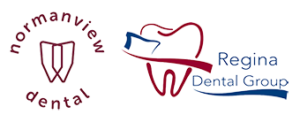How to Effectively Brush Your Teeth
As easy as it may seem, many people do not know the correct way to brush their teeth. Brushing helps prevent oral diseases and dental health conditions like tooth decay, halitosis, and gingivitis. However, if you don’t brush correctly, you run the risk of causing harm to your teeth and damaging gums.
Proper Way to Brush Your Teeth
Before brushing, it is good to floss your teeth. Flossing is very important, yet many people do not do it regularly. The floss is able to reach parts of your mouth that a toothbrush can’t – like the small crevices between your teeth. This is a common area where plaque and tartar build up, which can cause cavities and tooth decay.
1. Prepare Your Toothbrush
After flossing, wet your toothbrush and apply a small, pea-sized amount of toothpaste. Most people use too much toothpaste, when really, it is not the toothpaste that does the majority of the work. Brushing is mostly about the technique and the way you brush, not so much the toothpaste that is used. Talk your dentist about what toothpaste is best for you. A fluoridated toothpaste is often suggested, since it protects the teeth against tooth decay and cavities.
2. Brush Properly
Start in the back with your molars and work in a clockwise direction. Point the bristles toward the gumline and use short, circular motions for approximately 20 seconds. Roll the bristles away from the gum line so the toothbrush sweeps toward the surface of the tooth. This removes plaque and food particles.
Working in a clockwise motion, repeat with the molars on the opposite side of your mouth. Work around the rest of your teeth. Brush the back surface of the teeth, directing the bristles towards the gum line.
Repeat for the rest of your teeth until they are all cleaned and brushed.
3. Brush the Rest Of Your Mouth
Your teeth aren’t the only thing that needs to be cleaned in your mouth. Your tongue, roof of the mouth, and lining of your cheeks can hold food particles and bacteria that can make your breath smell and cause halitosis.
Clean these areas with small, circular motions until they are thoroughly cleaned.
Common Brushing Mistakes
There are a few common mistakes many people make when brushing their teeth. Fortunately, they are easily corrected.
- The Wrong Brush: Choose a brush that can reach all areas of your teeth. This can be a manual of electric brush. It’s also important to choose a brush with soft bristles that easily bend.
- Brushing Too Hard: If you brush too hard, you run the risk of ruining the enamel on your teeth, making them more susceptible to tooth decay and oral diseases.
- Not Switching Out Toothbrushes: A toothbrush should be changed every 3-4 months. When the bristles become discoloured, bent, or dirty, your toothbrush can be a turn into a breeding ground for mold and bacteria.
- Brushing Incorrectly: If you brush back and forth, instead of a circular motion, you may need to rethink your brushing technique. Going from the gum line to the bottom of the tooth in a clockwise motion is more beneficial for the tooth enamel to remain in tact.
- The Wrong Angle: Brushing at a 45-degree angle is important to reaching the whole surface area of your teeth. That allows you to get the gum line as well as the rest of your tooth.
If you would like to learn more, please do not hesitate to give us a call or contact us to book an appointment.
